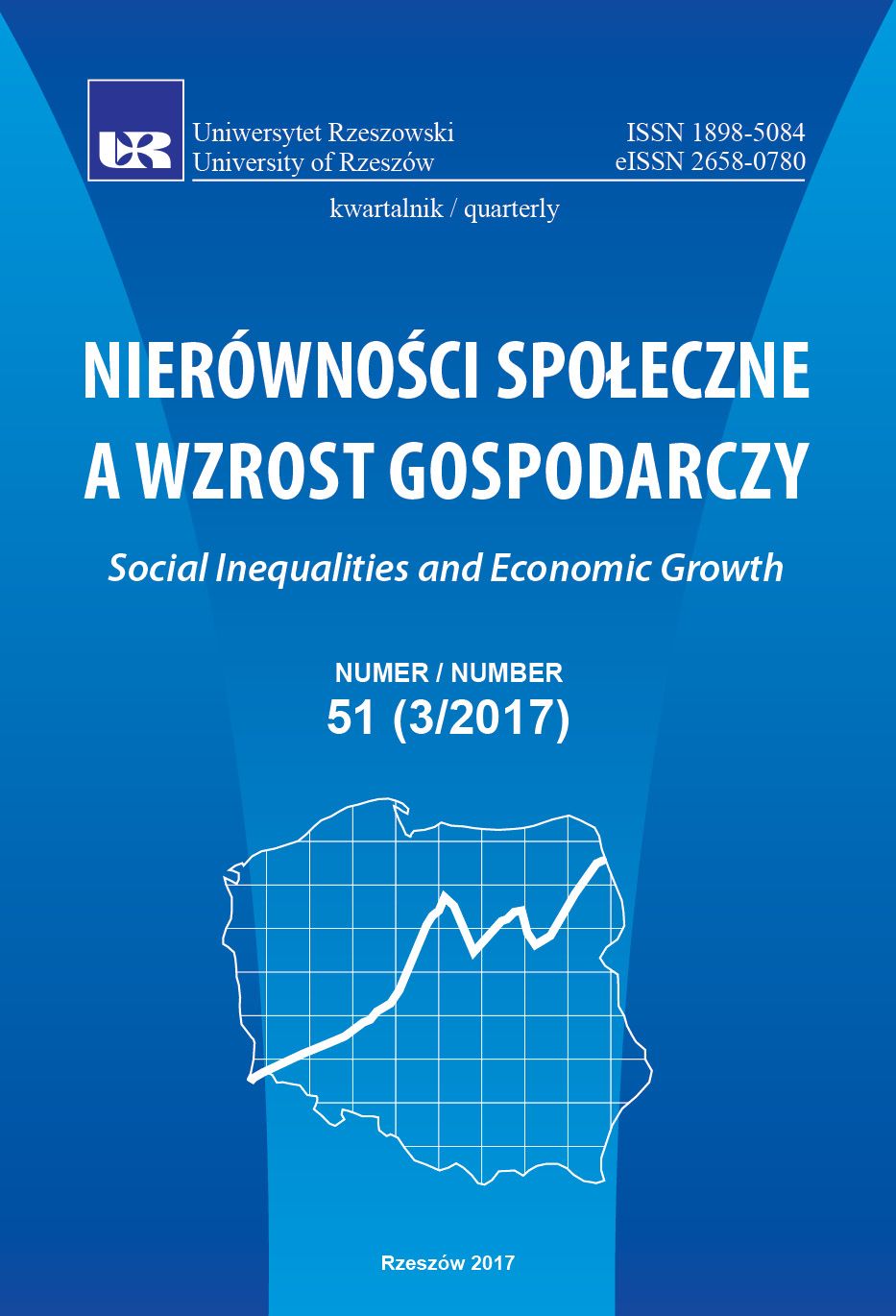Evaluating the generalized effectiveness of selected labor markets
DOI:
https://doi.org/10.15584/nsawg.2017.3.20Keywords:
wage mobility, labor mobility, intersectoral mobility, labor market, efficiency, Markov processAbstract
The aim of this paper is to analyze and evaluate the efficiency of chosen labor markets using additional dimension of the previously conducted analysis of the intersectoral mobility of wages and employment. Analysis of the intersectoral mobility will be carried out in two ways: on the one hand, by supplementing it with the market reaction to intersectoral employment’s change, and on the other with the use of aggregate changes in sectoral differentiation of wages (wage mobility). For each of the sampled labor market the estimation of the transition matrix will be performed (separately for the structure of wages and employment by sector). Then, for each specific matrix the index of mobility will be calculated. According to the author’s opinion the ratio of index of labor and wage mobility may additionally evaluate the labor market flexibility (its ability to autoadaptation to changes). This type of meter can also be incorporated into the construction of synthetic indicators of the efficiency of labor markets. Empirical analysis were carried out on a pilot sample of 20 selected OECD countries.Downloads
Download data is not yet available.
Downloads
Published
2020-11-13
How to Cite
Flisikowski, K. (2020). Evaluating the generalized effectiveness of selected labor markets. Social Inequalities and Economic Growth, 3(51), 244–257. https://doi.org/10.15584/nsawg.2017.3.20
Issue
Section
Articles
License
Copyright (c) 2017 University of Rzeszow

This work is licensed under a Creative Commons Attribution-ShareAlike 4.0 International License.


